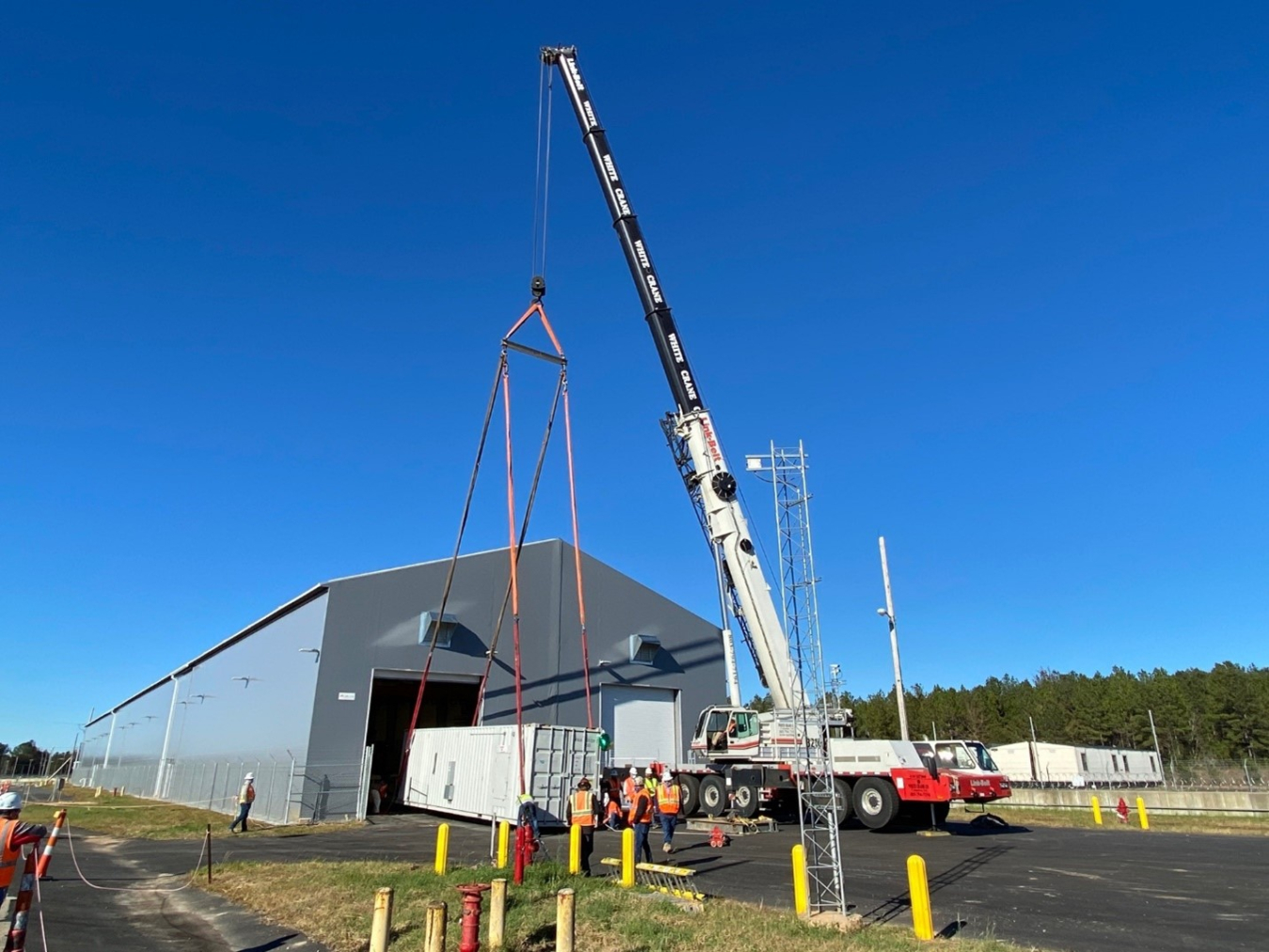Contractor employees at the Department of Energy’s Savannah River Site recently completed the transfer of equipment, used for the inspection of drums holding radioactive material, from the SRS Solid Waste Management Facility (SWMF) ...
April 8, 2021AIKEN, S.C. - Contractor employees at the Department of Energy’s Savannah River Site recently completed the transfer of equipment, used for the inspection of drums holding radioactive material, from the SRS Solid Waste Management Facility (SWMF) to the Site’s K Area Criticality Control Overpack (CCO) Characterization and Storage pad, which helps in the acceleration of the removal of plutonium from South Carolina.
“The transfer of this equipment was no easy task,” said DOE Nuclear Materials Senior Technical Advisor Maxcine Maxted. “Weighing over 70,000 pounds and at 40 feet long, many departments had to be involved in the safe transport. However, moving the equipment to K Area means we can skip the step of sending CCO drums to SWMF for characterization and shipping to WIPP, as has been required in the past. Now we can perform both of those tasks right from K Area, making the process more efficient.”
The equipment, a Real Time Radiography (RTR) unit, utilizes an x-ray system to allow the contents of drums holding radioactive material to go through a non-destructive examination (NDE). This allows for the materials to be inspected without operators having to physically open the container. The transfer of this equipment is an important step in the construction of the K Area Criticality Control Overpack (CCO) pad. CCO drums were developed to safely package and transport specific materials, like the downblended plutonium in K Area, to the Waste Isolation Pilot Plant (WIPP) in New Mexico for final disposition.
“WIPP has specific standards for the type of materials allowed in their underground repository,” said DOE-SR Director of Waste Disposition Programs Division Sonitza Blanco. “The NDE is performed under the certified Central Characterization Program, which is managed by the personnel from the managing and operating contractor of WIPP, Nuclear Waste Partnership. It verifies and validates that the waste within each container matches the documentation provided by SRS and that it does not contain any WIPP prohibited items.”
After the CCO has gone through the NDE process, it will go through a non-destructive assay process to ensure materials are within radioactive limits. After the examination and assay, the CCO is then certified to ship to WIPP and subsequently loaded into a larger sealed container before leaving K Area.
The CCO pad, still under construction, initially will add the capacity to store over 3,800 CCO drums while awaiting shipment. Construction is scheduled to be complete later in 2021. After it is completed, DOE and Environmental Protection Agency regulatory reviews will be conducted prior to WIPP authorizing the first shipment planned in 2022.
Along with the CCO pad construction, K Area has also undergone extensive facility modifications and equipment upgrades to perform plutonium downblend more efficiently.
Principle Media Contact:
Lindsey MonBarren
Savannah River Nuclear Solutions
(803) 645-5455, [email protected]
DOE Media Contact:
Monte Volk
(803) 952-8283, [email protected]


